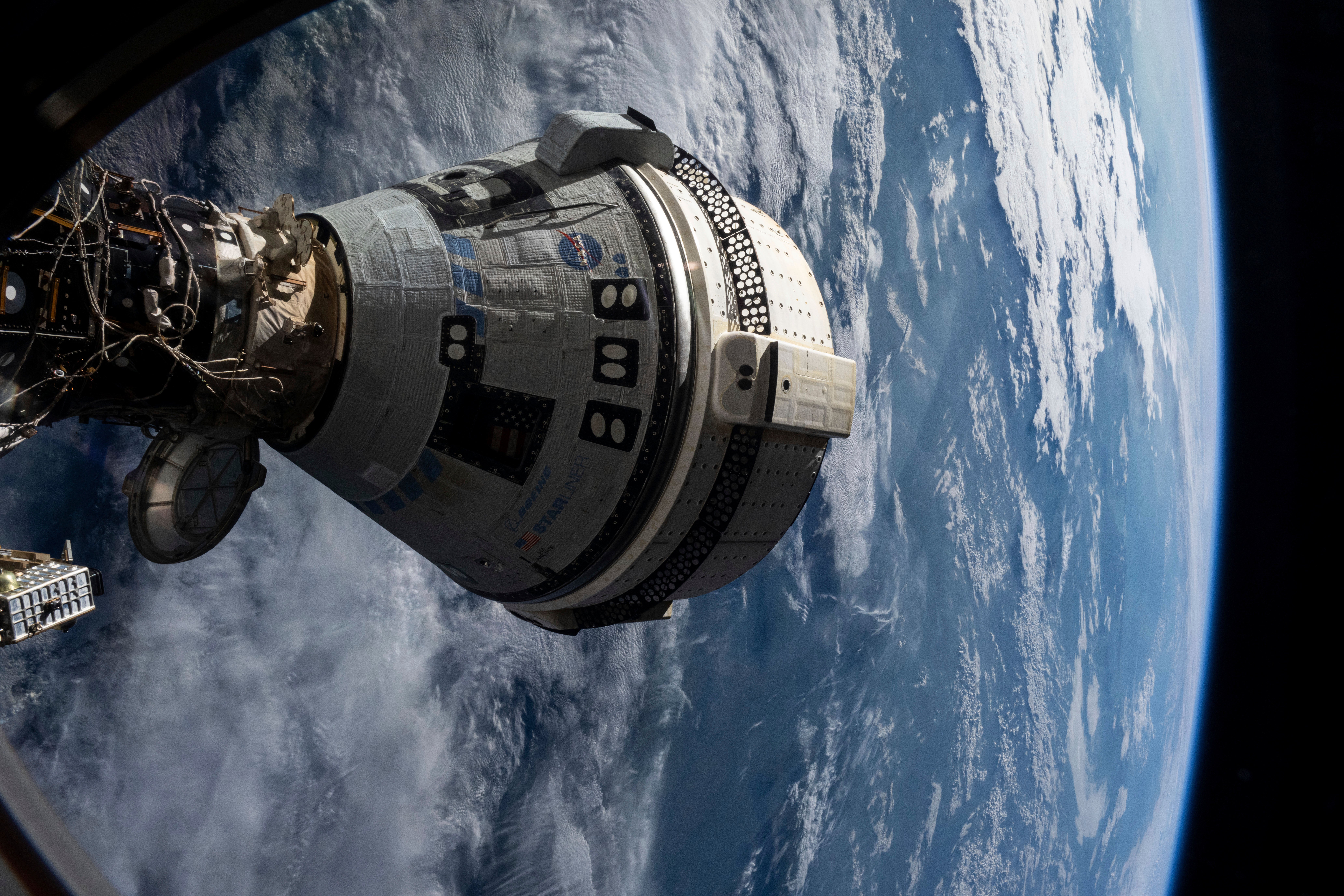NASA picks Elon Musk’s SpaceX to bring back astronauts stuck in space in fresh blow to Boeing
Stranded astronauts Sunita Williams and Barry ‘Butch’ Wilmore, will be brought home in February 2025, having arrived at the ISS in early June

Your support helps us to tell the story
From reproductive rights to climate change to Big Tech, The Independent is on the ground when the story is developing. Whether it's investigating the financials of Elon Musk's pro-Trump PAC or producing our latest documentary, 'The A Word', which shines a light on the American women fighting for reproductive rights, we know how important it is to parse out the facts from the messaging.
At such a critical moment in US history, we need reporters on the ground. Your donation allows us to keep sending journalists to speak to both sides of the story.
The Independent is trusted by Americans across the entire political spectrum. And unlike many other quality news outlets, we choose not to lock Americans out of our reporting and analysis with paywalls. We believe quality journalism should be available to everyone, paid for by those who can afford it.
Your support makes all the difference.NASA has announced that it will use SpaceX’s Dragon capsule to bring home two astronauts stuck in space for months, in a fresh blow to aerospace company Boeing.
The agency said it does not have confidence in Boeing’s troubled Starliner capsule, which will return to earth unmanned, and that the two astronauts, Sunita Williams and Barry “Butch” Wilmore, will be brought home in February 2025.
Ms Williams and Mr Wilmore will stay on the International Space Station until that time, having been there since early June.
It is the latest setback for Boeing, which has suffered a string of mishaps and subsequent lawsuits since January, when a panel blew out of an Alaska Boeing 737 Max 9 jetliner mid-flight.
The decision on Starliner was a result of “a commitment to safety,” said NASA administrator Bill Nelson. “Our core value is safety and it is our north star,” he told reporters on Saturday.
“NASA has decided that Butch and Sunny will return with crew nine next February, and that Starliner will return uncrewed,” Nelson said.

“I want you to know that Boeing has worked very hard with NASA to get the necessary data to make this decision. We want to further understand the root causes and understand the design improvements so that the Boeing Starliner will serve as an important part of our assured crew access to the ISS.
Nelson added that he had spoken to new Boeing CEO Kelly Ortberg, who said the company would continue to work through the problems once Starliner returned.
“Space flight is risky, even at its safety safest and even at its most routine,” Nelson said. “And a test flight by nature, is neither safe nor routine, and so the decision to keep Butch and Sonny aboard the International Space Station and bring the Boeing Starliner home uncrewed is a result of a commitment to safety.
“Our core value is safety, and it is our north star. And I’m grateful to NASA and to Boeing for their teams, for all the incredible and detailed work to get to this decision.”
Elon Musk’s SpaceX has been flying crews to the ISS since 2020.
Instead of launching a full four-man crew, SpaceX will fly just two when it launches Dragon to the station in late September. That crew, which would then include Williams and Wilmore, would come home in February 2025.

The decision to select SpaceX as the company to return the astronauts was “unanimous” among NASA officials, former astronaut Ken Bowersox said.
Boeing previously insisted it still stands behind the Starliner, which suffered mechanical issues on its way to docking at the ISS on 6 June for what was supposed to be an eight-day mission.
The June flight was its first crewed mission to the ISS on the Starliner, a flagship development from the aerospace giant meant to compete with SpaceX for contracts with NASA.
Boeing has seen its production slow down since the safety concerns launched a series of federal investigations. In total, the company has delivered about 90 fewer planes this year, compared to the same time last year.
The manufacturer is burning through more than $1bn in cash a month as it has dozens of new planes sitting outside factories in need of parts, according to a report last month by The Wall Street Journal. Parts shortages and other issues have left Boeing with roughly 200 mostly finished jets sitting on airfields, outside plants and even in employee parking lots.
Boeing also faces a string of lawsuits relating to manufacturing malpractice after a door plug on a 737 Max 9 blew off during an Alaska Airlines flight in January. Before this, Max jets also crashed in 2018, in Indonesia, and 2019 in Ethiopia, killing 346 people.
At a tense senate hearing in June, CEO David Calhoun apologised to the families of crash victims, saying the embattled company was “totally committed” to future aircraft safety.
Join our commenting forum
Join thought-provoking conversations, follow other Independent readers and see their replies
Comments